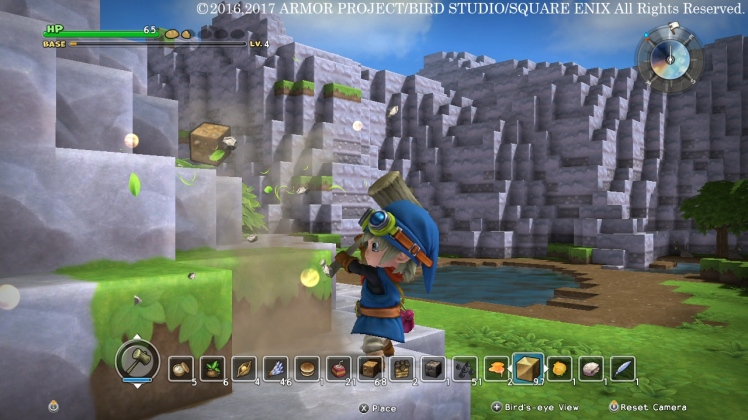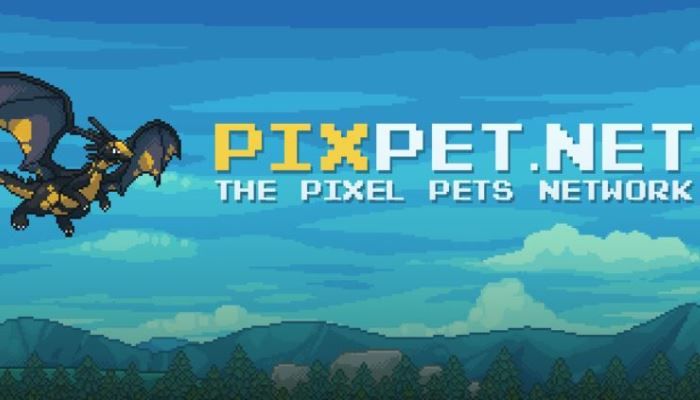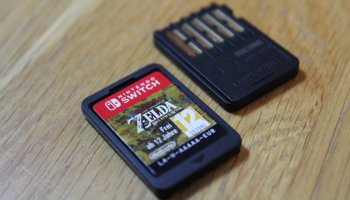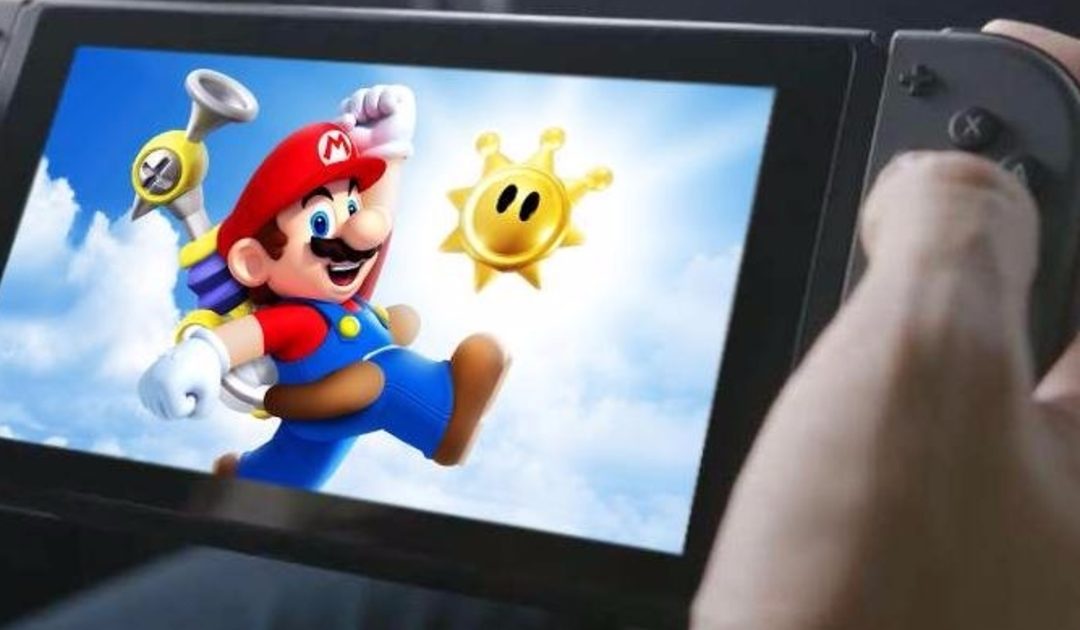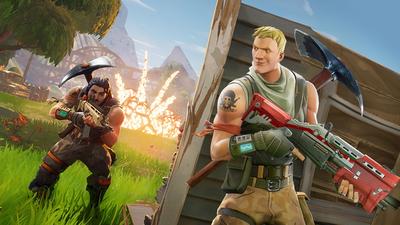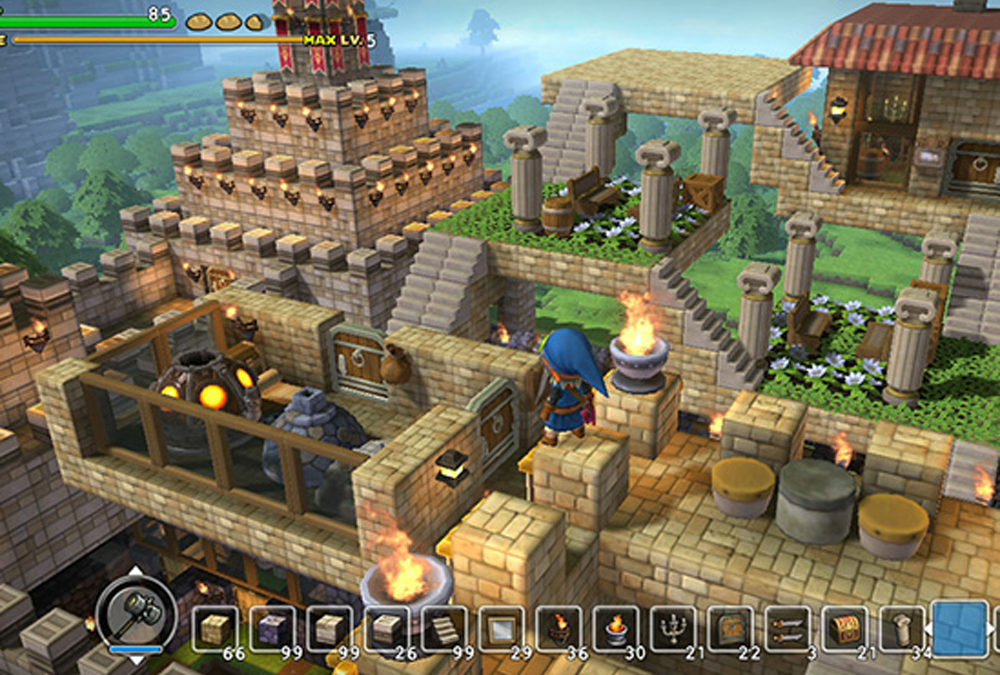
Dragon Quest Builders for Switch review: Minecraft for less imaginative people
Chad Sapieha and his little reviewer-in-training came away with slightly different takes on Square Enix's blocky crafting RPG

These are all features I’ve long wished for in Minecraft. And seeing them implemented within the familiar world of Dragon Quest – a long-running series of Japanese role-playing games that I’ve played for decades – was a joy for me when I played the game on PlayStation 4. But it seemed like I wasn’t in the majority. The game had sold a little over a million copies worldwide, last I heard. That’s not terrible, but it’s just a tiny fraction of the more than 130 million copies of Minecraft that have been purchased by kids around the world.
Still, I thought maybe people just hadn’t given it a chance. So I let my 12-year-old kid – a long-time Minecraft devotee and lover of role-playing games – loose with the soon-to-be-released Nintendo Switch edition of Dragon Quest Builders thinking it was bound to become her new obsession. Turns out she’d rather be free to follow her imagination than locked into linear story and told what to do.
Here’s a transcript of the discussion we had after she’d been playing for a few days. It will serve as our review.
 Me: I thought you’d have a great time with Dragon Quest Builders. It basically combines the mining, crafting, and building parts of Minecraft with a colourful Japanese RPG – one of your favourite kinds of games. What did you think of it?
Me: I thought you’d have a great time with Dragon Quest Builders. It basically combines the mining, crafting, and building parts of Minecraft with a colourful Japanese RPG – one of your favourite kinds of games. What did you think of it?
Kid: Honestly, it isn’t my favourite. For a few reasons. At the start the problem was mostly controls. I just didn’t like how they were set up. That’s something I can eventually grow used to, but I also didn’t like how you couldn’t explore the whole world right from the start. The story kind of limits you to a specific area – an island – because of some “unseen force.” There are also some things about the inventory that I didn’t like. I had to go back to my chest to store stuff all the time. It’s definitely not an awful game, but it’s not my new favourite.
Interesting. The control problem you mentioned happens to me all the time. Having played games for decades, I expect certain types of games to have specific button schemes. When a developer tries something new – like, say, uses the top action button to jump rather than the bottom one – it can be frustrating. At least until I get used to them.
I’ve kind of grown used to the controls now, but I still get frustrated. This game uses the A-button to get to the menu, which makes no sense to me because it’s your primary button. I’m always pressing it thinking it should do something else. Or at least I was at the start. It’s gotten a little better.
 Fair enough. Personally, I have to say that I like Dragon Quest Builders a bit more than Minecraft, mostly just because it has a story and objectives. Minecraft is great when it comes to creative freedom, but I can only build towers and castles for so long until I get kind of bored. It might just be a lack of imagination on my part, but I like to have missions and objectives. Dragon Quest Builders gives us that.
Fair enough. Personally, I have to say that I like Dragon Quest Builders a bit more than Minecraft, mostly just because it has a story and objectives. Minecraft is great when it comes to creative freedom, but I can only build towers and castles for so long until I get kind of bored. It might just be a lack of imagination on my part, but I like to have missions and objectives. Dragon Quest Builders gives us that.
Well, I’d like it more if I could at least leave the island and do whatever I wanted to do. That way I’d have the choice. I could either do the story stuff, or I could go off and just do whatever I wanted to. Find more resources to build stuff. I guess I kind of get why they can’t let you do that – it’d be hard for the designers to tell a story that makes sense if you could go places you weren’t supposed to see until later on – but it’s what I want. Minecraft might not have a story, but I can do whatever I want, whenever I want. I think that’s more important to me.
I get you. And I’m the first to admit that the story in Dragon Quest Builders isn’t anything special. Standard fantasy stuff involving monsters and world saving. But it provides a reason and context for everything you do, which I like. I also like how we get blueprints for building certain buildings and objects. They provide a starting place and a seeding ground for ideas – kind of like a Lego kit with an instruction booklet. Afterward you can go crazy building anything you like, but that initial guidance is nice.
Yeah I really liked the blueprints, too. I thought it was a cool spin. Even in the Lego games you don’t really get blueprints you can build piece by piece, not even in Lego World where you’re free to build anything. I think that’s one of the best parts of Dragon Quest Builders. Something other people who make games like this might want to copy.
 Another thing I liked was how this game handles crafting. Once you have what you need for a complex object, you can just build it, instantly. That’s smart. When it comes to crafting, how and where in the world you choose to place what you’ve made is the fun part, not sorting through your inventory to pick out all the pieces you need.
Another thing I liked was how this game handles crafting. Once you have what you need for a complex object, you can just build it, instantly. That’s smart. When it comes to crafting, how and where in the world you choose to place what you’ve made is the fun part, not sorting through your inventory to pick out all the pieces you need.
Yeah, the designing is definitely the fun part. But, in Minecraft‘s defence, in newer versions you can go into the settings and change it so that you don’t have to manually go through your inventory to make stuff like beds and doors.
How about the look and feel? I’d be lying if I said Minecraft‘s retro pixelated aesthetic hasn’t worn a little thin with me. Dragon Quest Builders keeps the blocky vibe, but adds more vibrancy and detail. It just feels like it has more character.
Yeah. I do like how it looks more than Minecraft. There are little details, like bits of grass on blocks, that make things a bit more realistic. And I like that the characters in this game are like little cartoon characters with more personality. Maybe it’s just because of how much I’ve played Minecraft, but sometimes it gives me a headache. I’ll go to sleep at night and close my eyes and just see its blocky graphics.
Does Dragon Quest Builders make you want to try other Dragon Quest games? Part of the reason for creative spinoffs like this is to get new people interested in the core series. Other Dragon Quests aren’t really like this one – they’re much more traditional JRPGs – but they contain similar elements, like monster types and the style of dialogue.
It makes me interested in them. But I don’t know if I ever would. I love role-playing games, but they take so much time. I think I’ve got too many to play already. And aren’t there, like, a dozen of them? That’s, like, hundreds and hundreds of hours. I could never catch up.
 Good point. Final verdict?
Good point. Final verdict?
I think you know I’m pretty generous with ratings, so keep that in mind. I think I’d probably give it like a seven or seven-and-a-half out of ten. The idea is really good, and the animation is cute, and even the story isn’t half bad – and you can kind of skip it if you don’t like it – but something about it just doesn’t really click for me the way it does in some of my favourite games. I’ll probably keep playing when I get tired of The Legend of Zelda: Breath of the Wild or if I’m not online and can’t play Splatoon2, but there are other games I’d rather play.
I like to think I’m not quite as generous as you are with scores, but I’d give it a seven-and-a-half or even an eight. I actually think older players will like it more than kids, both because of the name – there are lots of grown-ups out there who grew up with Dragon Quest – and the guided elements. Problem is, it’s clearly targeted at kids, who, like you, might want a little more freedom and fewer limitations. I guess it’s a good little game that’s maybe stuck between audiences.
It’s true old people have no imagination. Every time you play Minecraft you just build big ugly towers into the sky made of random things and then jump off them into the water. Then you stop playing. And when we play Lego you’re just like Will Farrell in The Lego Movie, except you don’t have his hair or teeth. You just stick to the instructions and leave stuff built until it gets dusty. So, yeah, Dragon Quest Builders is probably about your speed.
Dragon Quest Builders for Switch review: Minecraft for less imaginative people
